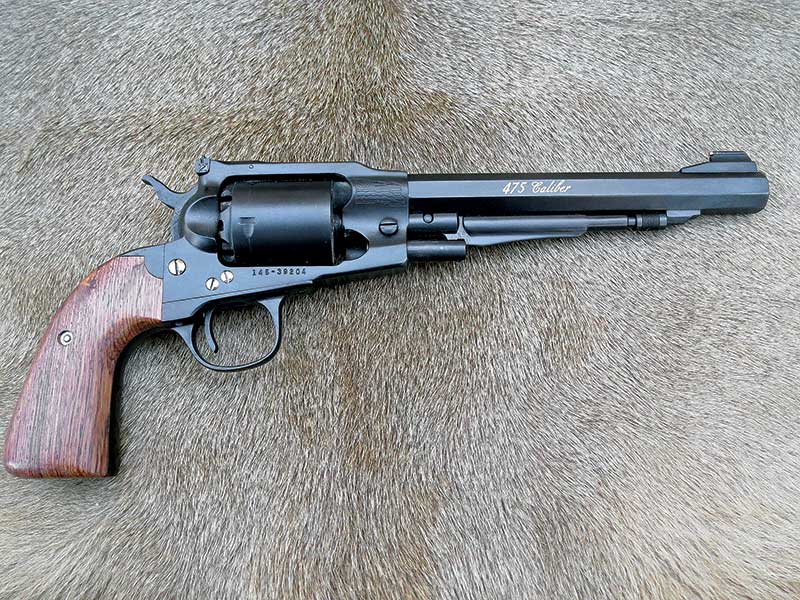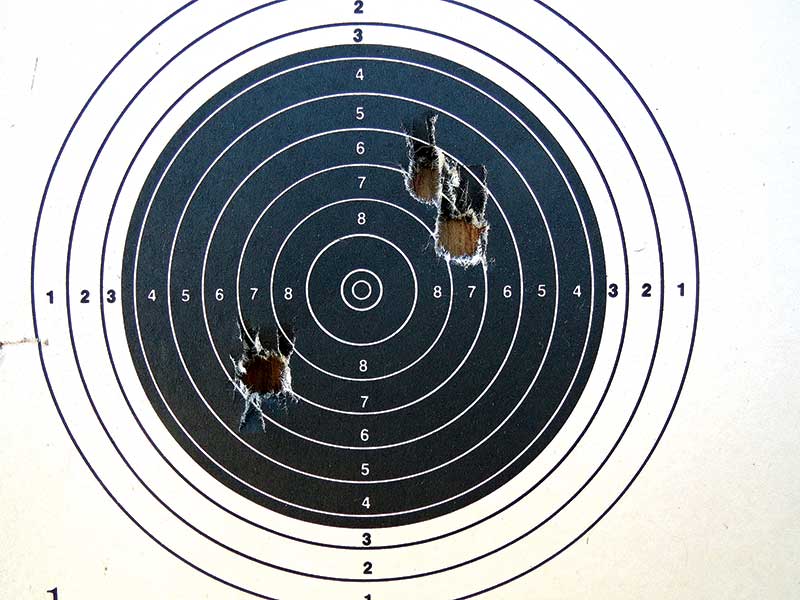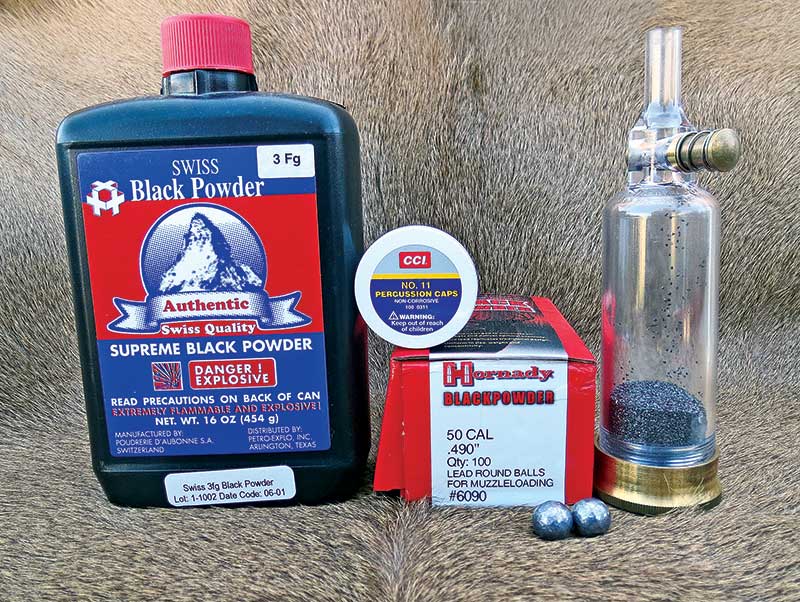Gary Reeder's Custom Ruger Old Army's
Since 1967 I’ve been shooting cap and ball revolvers — replicas and/or originals — of Colts and Remingtons dating from the Civil War era. So when his Editorship Roy asked if I wanted to do a piece on some custom percussion sixguns I said, “Huh? Custom percussion sixguns; I’ve never heard of such a thing.”
Well they do exist. They are products of Gary Reeder’s Custom Guns located in Flagstaff, Ariz. Both are based on Ruger’s Old Army design which must be nearing 50 years old itself. As everyone knows who has experience with Ruger Old Army revolvers, they are .45’s.
Actually the .44 cap and ball revolvers from the 1836/1873 era were .45’s too. They gained the .44 moniker by the measurement across the lands of their rifling and not the groove diameter. For instance, my 2nd Generation Colt .44 revolvers are all specified to take 0.457″ balls according to their instruction books. Ruger named their Old Army for its groove diameter.
One of the Gary Reeder custom Rugers is a .45. As a matter of fact, it’s based on one of their stainless steel Old Army’s with their strong topstrap frame. The first things you’ll notice when seeing it is the grip frame is a Bisley style. The difference between the original Ruger Old Army grip frame and the Bisley grip frame is the former is gently curved and the latter has more of a bend to its curve. Reeder then equipped the grip frame with a set of fancy walnut grips.
Also fancy is the laser engraving (you either like it or not) over most of the handgun. Likewise etched into the barrel’s left flat is “.45 Caliber” and above it on another flat is “Test Gun #1.” A sharp reader now will be scratching his head and thinking, “Flats?” Right, instead of the Ruger Old Army’s round barrel Reeder has installed an octagon barrel, and instead of the original 71/2″ length this one is only 65/8″. The other side of the barrel is labeled “American Classic” with Mr. Reeder’s signature on the flat above.
Both guns have custom touches like action jobs, Reeder’s “maxi-throat,” deep dish crowns and those front sights are interchangeable.
Test Gun #1
As best as I can determine Test Gun #1 retains its original Ruger 6-chamber cylinder. The Ruger rammer arrangement is likewise still there. For sights a modern style front with green-colored insert is mounted on a ramp base. The basic rear sight is still Ruger — fully adjustable for windage and elevation but instead of its notched blade Reeder replaced it with one with a wide V-notch.
I didn’t shoot this first custom cap and ball revolver for two reasons. One is I have fired plenty of .44/.45 percussion revolvers over the decades. Reason two is shooting cap and ball revolvers is a dirty business and I did not want all sorts of residue to end up in the engraving. Plus, I’m a lazy sort and didn’t want to do much cleaning!
The .475
That brings us to the second Gary Reeder custom cap and ball revolver. This one really piqued my interest because it is a 0.475″. So what size ball does one shoot in a 0.475″ cap and ball revolver? I asked myself the question when rummaging through my stock of round, pure lead balls ranging from 0.310″ to 0.57″. What I came up with were 0.490″ ones from Hornady, weighing 177 grains. Being pure lead (i.e. dead-soft), they easily swaged into the chambers.
Speaking of chambers, there were only five in this custom made cylinder. A powder flask was used to load the chambers. Two dollops from it gave 45 grains of Swiss FFFg black powder which is about the hottest on the market today.
Like the first custom Reeder gun mentioned above this one likewise has the Ruger Bisley grip frame and it’s also fitted with fancy walnut stocks. Instead of stainless steel this .475 model is regular carbon steel with a blue finish. There is only a minor amount of engraving on each side of its frame in the form of American flags. The specially made cylinder only has the stamping “Black Powder” engraved on it.
As with the first revolver, this one has an octagon barrel but it is 8″ long. On one side is stamped “475 Caliber” and on the other “American Classic” with Reeder’s signature above it. The front sight is a ramp with blade and brass bead. The rear sight is again fully adjustable and with the gentle V-notch instead of Ruger’s usual square notch.
Loading Up
For the uninitiated here’s a brief description of loading a cap and ball. First off, caps were fired on each nipple to clean them of any oil or grease. Next, the powder charge is dropped into a chamber and immediately the ball seated firmly down on it. Why not first charge all six chambers? I tried this once nearly 50 years ago. The disturbance of seating the first ball caused all the other chambers’ powder charges to spill out and all over everything — including me.
After each chamber has a ball seated, then some sort of grease must be smeared over it. Why? First, it keeps the black powder fouling soft, otherwise it sets up hard. Second, it seals the chambers in case of “flash-over” which is when the flame from the round being fired leaks into other chambers causing them to fire also.
I can brag I’ve never had this happen in nearly 50 years of shooting these revolvers. That’s because I liberally smear grease over each chamber, unless I have those nifty Ox-Yoke Wonder Wads, but they don’t come in 0.475″ size. After the first outing with this revolver I was out of the Navy Arms grease sold for this purpose so I just took a scoop of whatever Yvonne was using for cooking to use in the second outing. It worked fine too.
Upon arrival this .475’s rear sight was elevated so I cranked it all the way down. Obviously Mr. Reeder had paid attention to regulating these sights because it printed my 177-gr. balls precisely to point of aim at 25 yards.
Pulling the trigger on a .475 cap and ball revolver results in plenty of fuss and muss. The smoke must go at least 10′ from the muzzle and the noise is tremendous, increased somewhat because I was firing from inside my shooting house.
Accurate
Only three shot groups were fired because my box of 0.490″ round balls wasn’t full to begin with. Once I got used to the rather heavy trigger pull I had no trouble printing three shot triangles into about 2″. My chronograph showed velocity to just break 1,000 fps. The gun ran fine and was plenty accurate, showing Reeder’s work was sound.
Most readers will have heard the following joke: “Why do you carry a .45? Because they don’t make a .46!” I bet if back in the Civil War, someone had introduced a 0.475″ cap and ball revolver, there would have been plenty of takers.









